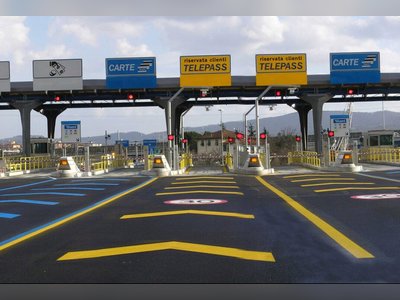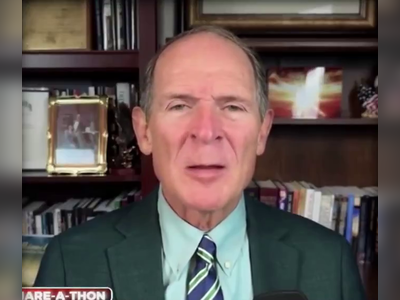
The Supreme Court Isn’t Your Friend, Liberals
Since Andrew Jackson added two cronies to create the now hallowed nine-Justice court, it’s almost always served as a reactionary instrument against workers and the popular will.
What liberals and conservatives have in common in their current struggle over the complexion and purpose of the Supreme Court is that both harken back to their own distinct myths that serve as literal benchmarks on the nature of the federal judiciary.
For liberals, the ideal is the Warren Court, whose progressive rulings generally obtained through the end of the 20th century. For conservatives, the seminal moment came with Franklin Roosevelt’s failed attempt to expand the high bench in 1937, making any further effort at such New Deal court-packing anathema.
What liberals failed to realize was that the enlightened moderation of the Warren bench and its immediate successors was an exception to a Supreme Court that, for most of its history, was a citadel of reaction. At its height of power in the Gilded Age it served as an imperial judiciary that overrode popular sovereignty subordinating man-made statutes to a doctrine of market-oriented “natural law” that defied precedent. Weaponizing the court to carry out a political agenda has a venerable pedigree.
One of the most illustrative moments in this narrative is how we arrived at the hallowed number of nine justices. It turns out that Andrew Jackson added two political cronies to the Supreme Court on his last day in office in 1837 with the collusion of a compliant Democratic Congress, thus expanding the number of judges from what till then had been seven. We can only wonder what Mitch McConnell, who held up Merrick Garland’s nomination during an election year, would have thought of such goings-on. Apparently, Jackson’s ploy as he was going out the door has gone unremarked by the critics of FDR’s court-packing scheme. For good measure, five of Jackson’s later appointees came from slave states—including his choice for chief justice, Roger Taney, whose court handed down the infamous Dred Scott decision.
Following the Civil War, the Supreme Court played a major role in impeding Reconstruction, curbing federal troops from protecting freemen in the former Confederacy and ultimately invalidating the Civil Rights Act of 1875. While the high court in effect gave a free hand to Klan terror in the South, it cracked down on labor unions in the industrializing North.
As Richard White demonstrates in The Republic for Which It Stands: The United States during Reconstruction and the Gilded Age, 1865-1896, it was during the Gilded Age that the Supreme Court and its federal tributaries hit full stride in terms of rampant judicial activism on behalf of a privileged class. While both Congress and state legislatures passed a considerable amount of labor reforms in response to the excesses of industrialization in the years between 1880 and 1900, the judiciary struck down over 60 of those laws.
During this period, the courts were openly hostile to labor, protecting corporations at the expense of workers. In doing so, they cited the concept of “freedom of contract” that harkened back to the early days of the Republic, wherein the employee was an independent producer who could negotiate on an equal basis with his employer. That this ideal no longer obtained in an age where the owner was a corporation and the worker a cog did not disturb its adherents. In their eyes, freedom simply meant the protection of property. Accordingly, an owner’s “property” included the labor of his employees, a commodity over which he had inviolable rights. Legislation by Congress or the states to ameliorate workers’ conditions was considered an infringement on property, and thereby on the owner’s freedom, although the employer was now a company. (This is the tradition that then-presidential nominee Mitt Romney referred to when he explained that “Corporations are people too, my friend.”) Corporations threatened by labor challenges sought redress from the courts, which granted injunctions that ended strikes or mustered the militia. That the labor movement persisted and grew occurred not because of, but despite, the bench.
A telling example of how the judicial theory of property impacted on the actual lives of people, chronicled by White, is the 1885 case of re Jacobs, in which New York state attempted to prohibit the manufacture of cigars in tenement sweatshops for reasons of public health. The Court of Appeals, New York’s high court, overturned the law ruling that the state had exceeded its police powers and undercut contract freedom. White observes that “the court defended sweatshop labor by treating the tenement as if it were a log cabin, the immigrant families as so many pioneers and the cigar maker as an artisan.”
In testifying before the state Senate committee that considered the law, the labor leader Samuel Gompers described conditions that he called “the most miserable… that I have seen in any time of my life.” What he recounted was a system in which bosses squeezed workers into fetid tenement quarters where whole families, including children, rolled cigars amid drying tobacco. The cigar makers profited further by charging rent to the workers they were exploiting, thus gaining at both ends of the manufacturing process.
The courts continued to rule against the efforts of states to improve labor conditions, culminating in the notorious Lochner decision of 1905 when the Supreme Court, citing an implied “liberty of contract,” invoked the due process clause of the 14th Amendment to prevent New York from regulating working hours. According to White, throughout this period, “labor reformers continued to win victories in state legislatures only to lose them in courts” whose overriding concern was “the rights of employers to use their property as they pleased.”
Corporations became adept at using the judiciary to turn reform legislation on its head and harness it to their own ends. For instance, the Sherman Antitrust Act of 1890, intended to curb the monopoly practices of robber barons, was wielded as a tool to stifle labor unions on the grounds of restraining trade. White tells us that of the 13 decisions involving antitrust law between 1890 and 1897, 12 involved unions.
When the depression of 1893 forced over-extended railroads to reduce costs, they did so by cutting wages and workers, without touching dividends. When the American Railroad Union responded by going on strike, a federal judge banned the workers from even meeting to discuss the walkout, thereby depriving them at a stroke of both freedom of speech and assembly. The court accommodated the government’s use of the Sherman Antitrust Act and the Interstate Commerce Act to issue an injunction against the union for impeding interstate commerce and against labor leaders from advocating a boycott in support of the strike or discussing the walkout in speech or print. The union leader Eugene Debs would go to jail for defying this edict.
For liberals, the ideal is the Warren Court, whose progressive rulings generally obtained through the end of the 20th century. For conservatives, the seminal moment came with Franklin Roosevelt’s failed attempt to expand the high bench in 1937, making any further effort at such New Deal court-packing anathema.
What liberals failed to realize was that the enlightened moderation of the Warren bench and its immediate successors was an exception to a Supreme Court that, for most of its history, was a citadel of reaction. At its height of power in the Gilded Age it served as an imperial judiciary that overrode popular sovereignty subordinating man-made statutes to a doctrine of market-oriented “natural law” that defied precedent. Weaponizing the court to carry out a political agenda has a venerable pedigree.
One of the most illustrative moments in this narrative is how we arrived at the hallowed number of nine justices. It turns out that Andrew Jackson added two political cronies to the Supreme Court on his last day in office in 1837 with the collusion of a compliant Democratic Congress, thus expanding the number of judges from what till then had been seven. We can only wonder what Mitch McConnell, who held up Merrick Garland’s nomination during an election year, would have thought of such goings-on. Apparently, Jackson’s ploy as he was going out the door has gone unremarked by the critics of FDR’s court-packing scheme. For good measure, five of Jackson’s later appointees came from slave states—including his choice for chief justice, Roger Taney, whose court handed down the infamous Dred Scott decision.
Following the Civil War, the Supreme Court played a major role in impeding Reconstruction, curbing federal troops from protecting freemen in the former Confederacy and ultimately invalidating the Civil Rights Act of 1875. While the high court in effect gave a free hand to Klan terror in the South, it cracked down on labor unions in the industrializing North.
As Richard White demonstrates in The Republic for Which It Stands: The United States during Reconstruction and the Gilded Age, 1865-1896, it was during the Gilded Age that the Supreme Court and its federal tributaries hit full stride in terms of rampant judicial activism on behalf of a privileged class. While both Congress and state legislatures passed a considerable amount of labor reforms in response to the excesses of industrialization in the years between 1880 and 1900, the judiciary struck down over 60 of those laws.
During this period, the courts were openly hostile to labor, protecting corporations at the expense of workers. In doing so, they cited the concept of “freedom of contract” that harkened back to the early days of the Republic, wherein the employee was an independent producer who could negotiate on an equal basis with his employer. That this ideal no longer obtained in an age where the owner was a corporation and the worker a cog did not disturb its adherents. In their eyes, freedom simply meant the protection of property. Accordingly, an owner’s “property” included the labor of his employees, a commodity over which he had inviolable rights. Legislation by Congress or the states to ameliorate workers’ conditions was considered an infringement on property, and thereby on the owner’s freedom, although the employer was now a company. (This is the tradition that then-presidential nominee Mitt Romney referred to when he explained that “Corporations are people too, my friend.”) Corporations threatened by labor challenges sought redress from the courts, which granted injunctions that ended strikes or mustered the militia. That the labor movement persisted and grew occurred not because of, but despite, the bench.
A telling example of how the judicial theory of property impacted on the actual lives of people, chronicled by White, is the 1885 case of re Jacobs, in which New York state attempted to prohibit the manufacture of cigars in tenement sweatshops for reasons of public health. The Court of Appeals, New York’s high court, overturned the law ruling that the state had exceeded its police powers and undercut contract freedom. White observes that “the court defended sweatshop labor by treating the tenement as if it were a log cabin, the immigrant families as so many pioneers and the cigar maker as an artisan.”
In testifying before the state Senate committee that considered the law, the labor leader Samuel Gompers described conditions that he called “the most miserable… that I have seen in any time of my life.” What he recounted was a system in which bosses squeezed workers into fetid tenement quarters where whole families, including children, rolled cigars amid drying tobacco. The cigar makers profited further by charging rent to the workers they were exploiting, thus gaining at both ends of the manufacturing process.
The courts continued to rule against the efforts of states to improve labor conditions, culminating in the notorious Lochner decision of 1905 when the Supreme Court, citing an implied “liberty of contract,” invoked the due process clause of the 14th Amendment to prevent New York from regulating working hours. According to White, throughout this period, “labor reformers continued to win victories in state legislatures only to lose them in courts” whose overriding concern was “the rights of employers to use their property as they pleased.”
Corporations became adept at using the judiciary to turn reform legislation on its head and harness it to their own ends. For instance, the Sherman Antitrust Act of 1890, intended to curb the monopoly practices of robber barons, was wielded as a tool to stifle labor unions on the grounds of restraining trade. White tells us that of the 13 decisions involving antitrust law between 1890 and 1897, 12 involved unions.
When the depression of 1893 forced over-extended railroads to reduce costs, they did so by cutting wages and workers, without touching dividends. When the American Railroad Union responded by going on strike, a federal judge banned the workers from even meeting to discuss the walkout, thereby depriving them at a stroke of both freedom of speech and assembly. The court accommodated the government’s use of the Sherman Antitrust Act and the Interstate Commerce Act to issue an injunction against the union for impeding interstate commerce and against labor leaders from advocating a boycott in support of the strike or discussing the walkout in speech or print. The union leader Eugene Debs would go to jail for defying this edict.
AI Disclaimer: An advanced artificial intelligence (AI) system generated the content of this page on its own. This innovative technology conducts extensive research from a variety of reliable sources, performs rigorous fact-checking and verification, cleans up and balances biased or manipulated content, and presents a minimal factual summary that is just enough yet essential for you to function as an informed and educated citizen. Please keep in mind, however, that this system is an evolving technology, and as a result, the article may contain accidental inaccuracies or errors. We urge you to help us improve our site by reporting any inaccuracies you find using the "Contact Us" link at the bottom of this page. Your helpful feedback helps us improve our system and deliver more precise content. When you find an article of interest here, please look for the full and extensive coverage of this topic in traditional news sources, as they are written by professional journalists that we try to support, not replace. We appreciate your understanding and assistance.











